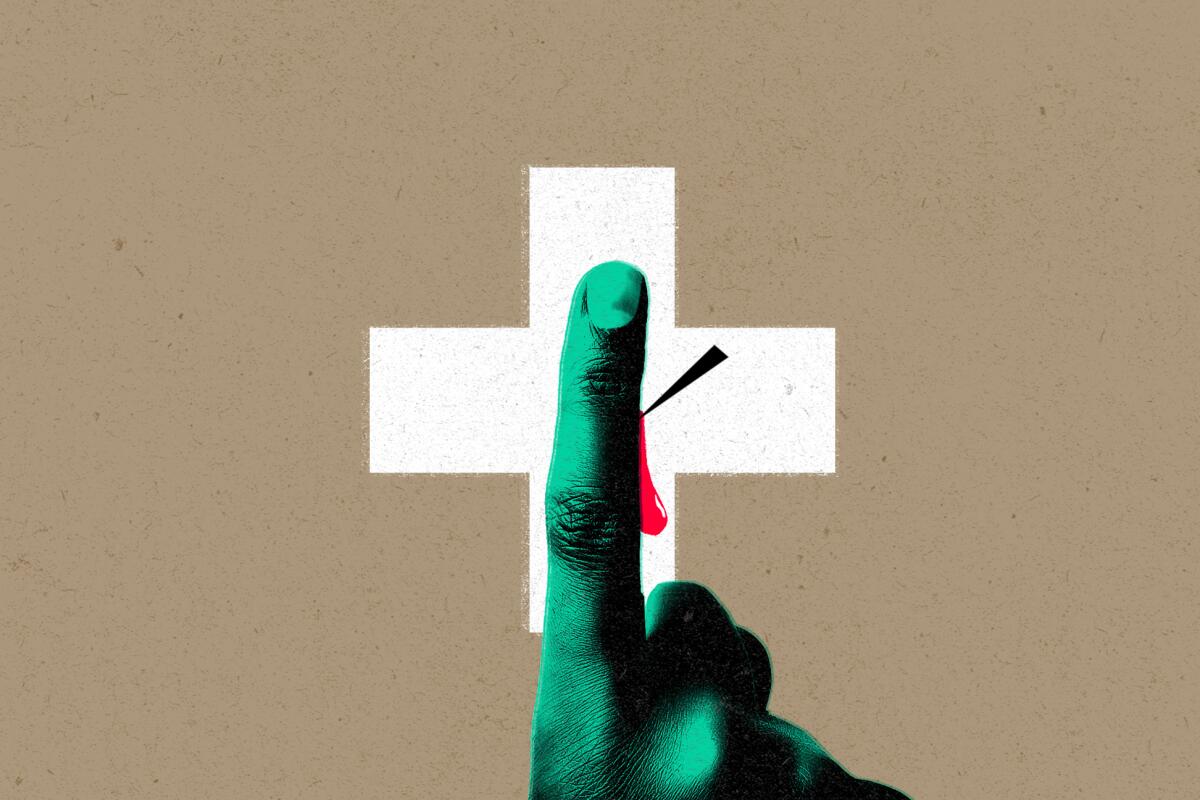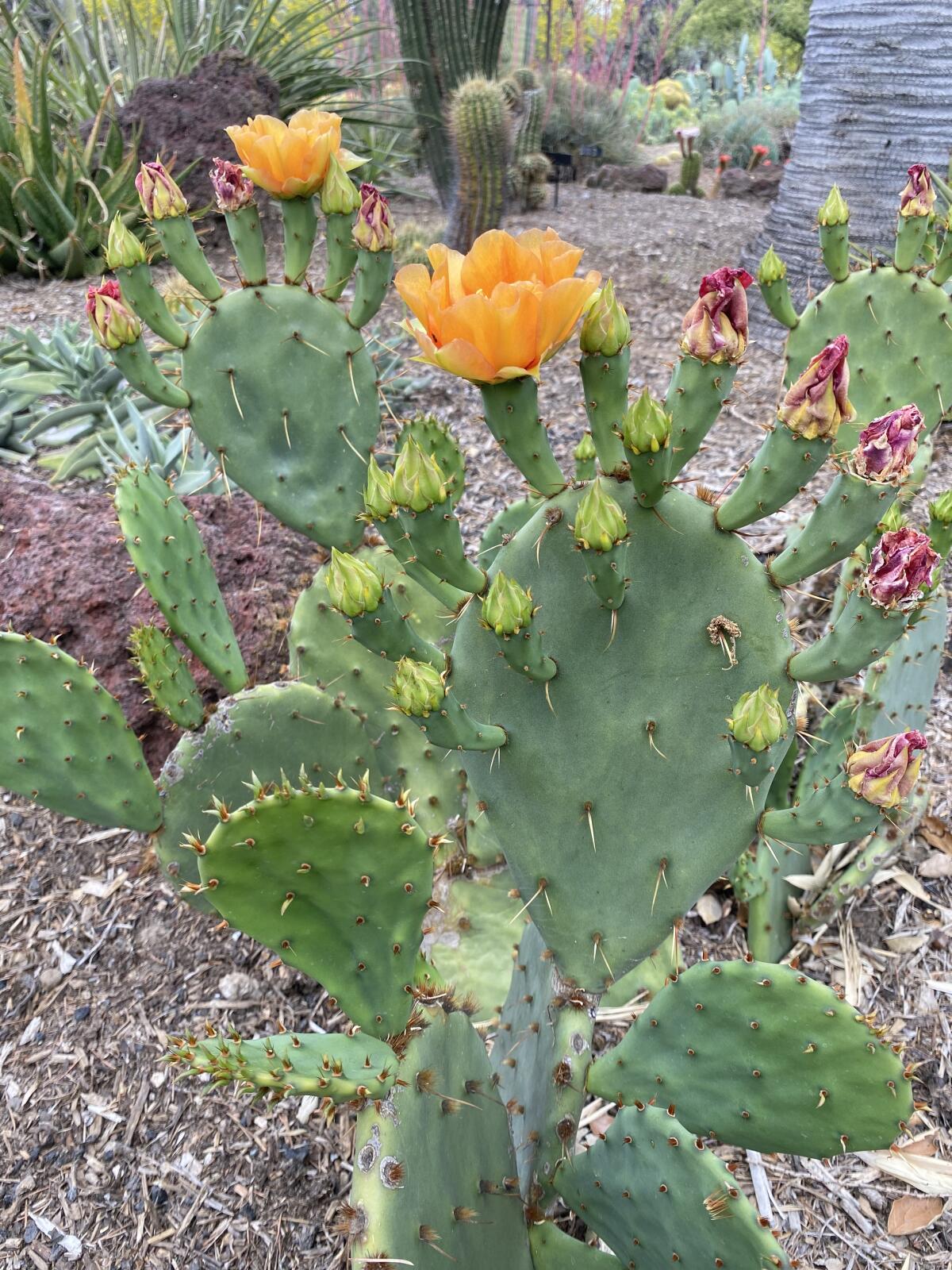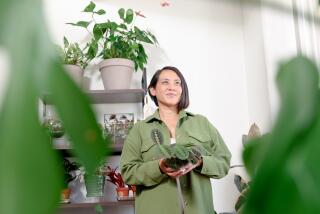A cactus prick on a SoCal trail became a medical emergency. What to do if you get spiked

It began innocently enough. While trail running at the El Modena Open Space in Orange a few years ago, I lost my balance and threw out my arms for stability. That’s when I backhanded a coastal prickly pear cactus.
As I glanced down, my right wrist and hand looked like the recipients of an acupuncture session from a toddler: Half a dozen toothpick-like spines were buried at varying depths in my skin. Channeling the stoicism of the ancient Spartans (or at least of Gerard Butler in “300”), I yanked out each spine one by one. I felt like I had been stung by multiple bees but figured it was nothing some ibuprofen couldn’t manage. I finished my run, then went home to clean and bandage the punctures.
Over the next few days my hand and wrist throbbed to the point of distraction. The area bruised and swelled, and the slightest movement caused intense pain — to the point where I couldn’t even type. I tried brushing off the severity of the injury, but nearly a week later, the pain remained and I also developed a fever and a hot pink rash around the punctures. I finally texted my doctor. His response: Come in now, or go to the ER.
I went into his office and took a blood test and X-ray. The diagnosis: A secondary bacterial infection had set in on top of joint inflammation.
Thankfully, after a few weeks of not being able to use my right arm for the simplest of tasks, and missing nearly a week of work, I recovered. But I’m now well aware of the little-known potential hazards of getting pricked by a cactus.
California is a hotbed for cactus —35 species call the state home — and the coastal prickly pear is one of the most common in the Los Angeles area. Known scientifically as Opuntia littoralis, coastal prickly pears are native to Southern California and crucial to the ecosystem, according to John Trager, curator of desert collections at the Huntington Library, Art Museum and Botanical Gardens in San Marino.

A perennial with dense clusters of oval-shaped green pads, the prickly pear’s long-blooming flowers are a source of pollen and nectar for bees. (Not to mention, the pads and fuchsia-colored fruits play a delicious supporting role in Mexican cuisine.)
Still, as beloved as they are, coastal prickly pears also are among the nastiest cactus to get poked by, in Trager’s opinion. Their spines are a two-pronged arsenal of 1½-inch beige needles — the classic spikes we’re used to seeing — and tiny, transparent glochids, little hair-like needles that are hard to see but just as damaging. Both types of spine are barbed and difficult to remove, and they cover the surface of the pads. “They’re these harpoon-like things with all these recurved barbs,” Trager said, adding that’s it’s easy to see why the spines are tough to pull out. One 2018 study conducted by researchers at the University of Illinois found that a single spine from a similar type of cactus, the cholla, could lift a half-pound piece of pork (shudder!).
Before you swear off area trails and rid your landscaping of cactus, know that my complications were rare. Trager estimates that he himself has had at least one cactus prick a month during his nearly 40-year career at the Huntington, and he’s never gotten a bacterial infection or required emergency medical attention.
“Usually it’s just topical irritation,” lasting a few days to a few weeks at the worst, “and it clears up,” he said. But cactus punctures do need to be taken seriously. The plant’s spines are covered in contaminants, Trager said, which “gather all sorts of debris, and are dirty enough that they might infect you.” Aside from bacterial or fungal infections, other undesirable outcomes from cactus injuries include lodged spines requiring surgery, plant thorn arthritis, necrosis and tetanus.
Here’s what to do if you get spiked by a coastal prickly pear or any species of cactus:
1. Act fast.
Try to remove the spines immediately. “Don’t wait several hours,” said Dr. Faried Banimahd, an emergency medicine physician, wound care specialist and owner of the WoundCareOC clinic in Santa Ana. “ You start to have a reaction around the spine and you start to get tissue around it, and it’s harder to get out. As long as those little spines are in there, they will irritate.”
2. But don’t pull haphazardly.
Wear gloves when you pull the spines. If you’re out in the wild and bare hands are your only option, Trager recommends taking care which direction you pull. Make sure spines won’t fly into your face, onto your clothes or onto another person. And don’t touch your face or anything else until you’ve thoroughly rinsed your hands, which may have lurking glochids.
3. Try different strategies.
Tweezers are the overall MVP for extracting long spines and glochids, according to both Trager and Banimahd. Deeper long spines may need a firmer grip, in which case Trager uses pliers or a hemostat clamp. Either way, he said, do it quickly. “It’s really better just to yank and get them out in one fell swoop.”
For the hair-like glochids, lighting and adhesives are the way to go. Since glochids are difficult to see, Trager likes using backlighting from the sun. Flashlights and smartphone lights work too.
To ensure you’ve removed all glochids on the surface, cover the puncture area with something sticky. When peeled from the skin, adhesives can remove remaining glochids. Trager has tried duct tape, and in the emergency room Banimahd uses a skin-safe glue and gauze. Rubber cement or hair-removal wax work similarly.
Whatever you do, don’t use your teeth, as one of Trager’s friends did. “He had an incident where he pulled them out with his teeth and accidentally inhaled a glochid,” Trager said. “That did not feel very good in the throat.”
Don’t panic if you can’t get everything out. Trager has had spines break off that were too deep or difficult to remove. “In that case, it’s usually a week to two or three at most when it works its way out,” he said.
4. Clean and monitor the area.
The best approach for wound care, according to Banimahd, is the simplest: Rinse with water. “Even if there’s no soap, you want to do pretty good irrigation with water, all wounds, whatever it is.”
Turn your faucet to full blast and flush skin for several minutes, and don’t clean it with anything other than mild soap. That’s right: no hydrogen peroxide, iodine or alcohol. Why? “That stuff is an irritant,” Banimahd said, “and it tears tissue.”
Wash the punctures, cover with a clean bandage, then keep an eye on them. If you start to see a reaction — redness, swelling or vesicles (fluid-filled blisters) — forming, Banimahd suggests applying a 1% hydrocortisone cream to calm the inflammatory response and triple antibiotic ointment to prevent infection.
Seek medical attention if infection starts. The signs, Banimahd said, are classic: “Redness, pain, swelling, pus discharge, fever, nausea and vomiting. If it starts to progress, I wouldn’t even mess with it. You need to go in and get oral or intravenous antibiotics.” You may also need a tetanus booster and imaging to check for lodged spines, as I did.
5. Prevent future injuries by assessing your yard and surroundings.
If you have kids or pets, it may not be worthwhile to have a cactus in your landscaping, especially if it’s a species of prickly pear. Even if you avoid getting pricked by the longer spines, Trager said, a slight brush against the plant can release the glochids, which will “float around and get into your skin and make you itch a little later.”
It should go without saying that moving a coastal prickly pear should be left to the pros. As for smaller or less dangerous cactus, investigate the species and consult a professional about safety before attempting to transport. Trager and employees at the Huntington generally use gloves, eyewear and various tongs and forceps to handle cactus and avoid getting poked.
More to Read
Sign up for The Wild
We’ll help you find the best places to hike, bike and run, as well as the perfect silent spots for meditation and yoga.
You may occasionally receive promotional content from the Los Angeles Times.






